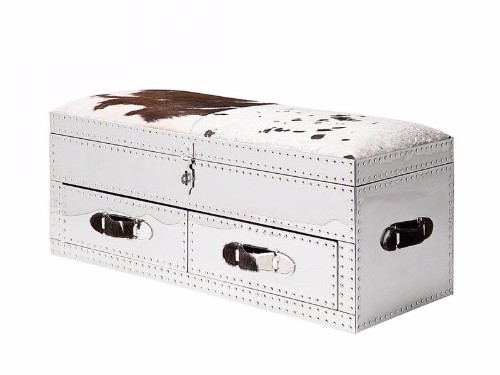DESIGN
Vladimir Kagan's Legacy
Vladimir Kagan loved birds. Kagan, the octogenarian legend in furniture design who died in April 2016, kept an aviary in his New York home for decades that opened up his interior spaces to the elegance of flight.
8 June, 2016
It was that same sweep of elegance that Kagan so often expressed in his design work, so it's no wonder that Kagan – who embraced a range of design materials, as they evolved across his decades of work – often chose aluminium as he fashioned furniture for everyone from Marilyn Monroe to Angelina Jolie.
Consider, for example, the iconic Unicorn Chair introduced by Kagan in 1959. The German-born designer said he was inspired by Bird in Space, a sculpture created by Romanian artist Constantin Brancusi whose own avant-garde preoccupation with the motion of flight spanned the decades of his work in Paris.
Kagan's Unicorn Chair
Source: VladimirKagan.com
Brancusi's "Bird in Space"
Source: chaudron.blogspot.fr
The Kagan furniture creation relied on a sculpted aluminium base, rather than traditional wood, in a futuristic V-shape that evoked a sense of wings at the dawn of the space age. Forty years later, Kagan designed the Savannah for Barlow Tyrie, with a woven texture on powder-coated aluminium frames.
Kagan, trained in part as an architect just as modernism arrived, embraced new materials and emerging technologies with an innovative spirit. His legacy is visible today in the work of interior designers and the craftsmanship reflected in minimalist design that often relies on the beauty and function of aluminium.
That's by no means limited to outdoor furniture, although people might be forgiven for thinking immediately of beach chairs and patios when they think aluminium furniture. That's often the case, but the elegance and versatility Kagan loved are put to good effect in today's marketplace by companies like the Munich-based KARE, which recently opened its 100th franchise shop in Milan.
Source: Modern Magazine
That's by no means limited to outdoor furniture, although people might be forgiven for thinking immediately of beach chairs and patios when they think aluminium furniture. That's often the case, but the elegance and versatility Kagan loved are put to good effect in today's marketplace by companies like the Munich-based KARE, which recently opened its 100th franchise shop in Milan.
Source: Modern Magazine
KARE met with wide success in its Vegas furniture line, including tables, chairs, lighting and an array of accent or décor items. Some of the resurging interest in aluminium furniture trends is aesthetic, with an eye toward the clean lines and swooping forms of the 1960s.

Vegas Cow
Copyright: KARE Design
What's more compelling in today's era is an aluminium choice grounded in smart, sustainable thinking. That's the logic behind Emeco in the United States, where the firm's recycled aluminium furniture story began with a U.S. Navy military contract during World War II.
The company started making 80 percent recycled-product chairs for the war effort, but now fuses that Kagan sense of style with a commitment to longevity that gives Emeco chairs an estimated 150-year life span.
Emeco's creative collaborations include aluminium furniture designs by architect Norman Foster, studio designer Ola Wihlborg, and Konstantin Grcic, an industrial designer whose collaboration with Emeco is featured in the Parrish Art Museum in New York. Art matters at Emeco, but what's really impressive is the company's commitment to using recycled aluminium (half of which comes from soft drink cans and other post-consumer sources).
Sustainability at Emeco extends to welding systems that use less water for cooling, lighting systems that cut power consumption by nearly a quarter, and no-VOC product finishes.
You'll find Emeco in Milan these days too, showing off both form and function – and showing off the critical shift for aluminium product companies. For these furniture craftsmen, design priorities are in harmony with and inspired by nature, just as they once were for Brancusi and Kagan.
You'll find Emeco in Milan these days too, showing off both form and function – and showing off the critical shift for aluminium product companies. For these furniture craftsmen, design priorities are in harmony with and inspired by nature, just as they once were for Brancusi and Kagan.
Banner image by VladimirKagan.com.